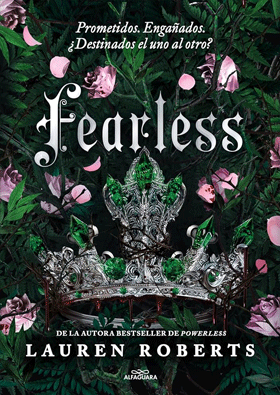

VICTORY CITY
In the wake of an unimportant battle between two long-forgotten kingdoms in fourteenth-century southern India, a nine-year-old girl has a divine encounter that will change the course of history. After witnessing the death of her mother, the grief-stricken Pampa Kampana becomes a vessel for a goddess, who begins to speak out of the girl’s mouth. Granting her powers beyond Pampa Kampana’s comprehension, the goddess tells her that she will be instrumental in the rise of a great city called Bisnaga—“victory city”—the wonder of the world.
Over the next 250 years, Pampa Kampana’s life becomes deeply interwoven with Bisnaga’s, from its literal sowing from a bag of magic seeds to its tragic ruination in the most human of ways: the hubris of those in power. Whispering Bisnaga and its citizens into existence, Pampa Kampana attempts to make good on the task that the goddess set for her: to give women equal agency in a patriarchal world. But all stories have a way of getting away from their creator, and Bisnaga is no exception. As years pass, rulers come and go, battles are won and lost, and allegiances shift, the very fabric of Bisnaga becomes an ever more complex tapestry—with Pampa Kampana at its center.
800
WALKING WITH GOD THROUGH PAIN AND SUFFE
The question of why God would allow pain and suffering in the world has vexed believers and nonbelievers for millennia. Timothy Keller, whose books have sold millions of copies to both religious and secular readers, takes on this enduring issue and shows that there is meaning and reason behind our pain and suffering, making a forceful and ground-breaking case that this essential part of the human experience can be overcome only by understanding our relationship with God.
As the pastor of Redeemer Presbyterian Church in Manhattan, Timothy Keller is known for his unique insights into religion and culture. Keller's series of books has guided countless readers in their spiritual journeys. Walking with God through Pain and Suffering uses biblical wisdom and personal stories of overcoming adversity to bring a much-needed, fresh viewpoint to this important issue.
850
WAR AND PEACE (VINTAGE CLASSIC)
Pierre Bezukhov, the illegitimate son of a count who is fighting for his inheritance and yearning for spiritual fulfillment; Prince Andrei Bolkonsky, who leaves behind his family to fight in the war against Napoleon; and Natasha Rostov, the beautiful young daughter of a nobleman, who intrigues both men. As Napoleon’s army invades, Tolstoy vividly follows characters from diverse backgrounds—peasants and nobility, civilians and soldiers—as they struggle with the problems unique to their era, their history, and their culture.
1,450
WATER MOON
On a backstreet in Tokyo lies a pawnshop, but not everyone can find it. Most will see a cozy ramen restaurant. And only the chosen ones—those who are lost—will find a place to pawn their life choices and deepest regrets.
Hana Ishikawa wakes on her first morning as the pawnshop’s new owner to find it ransacked, the shop’s most precious acquisition stolen, and her father missing. And then into the shop stumbles a charming stranger, quite unlike its other customers, for he offers help instead of seeking it.
Together, they must journey through a mystical world to find Hana’s father and the stolen choice—by way of rain puddles, rides on paper cranes, the bridge between midnight and morning, and a night market in the clouds.
But as they get closer to the truth, Hana must reveal a secret of her own—and risk making a choice that she will never be able to take back.
1,350
WE ALL LIVE HERE
Lila Kennedy has a lot on her plate. A broken marriage, two wayward daughters, a house that is falling apart, and an elderly stepfather who seems to have quietly moved in. Her career is in freefall and her love life is . . . complicated. So when her real dad—a man she has barely seen since he ran off to Hollywood thirty-five years ago—suddenly appears on her doorstep, it feels like the final straw. But it turns out even the family you thought you could never forgive might have something to teach you: about love, and what it actually means to be family.
1,350













